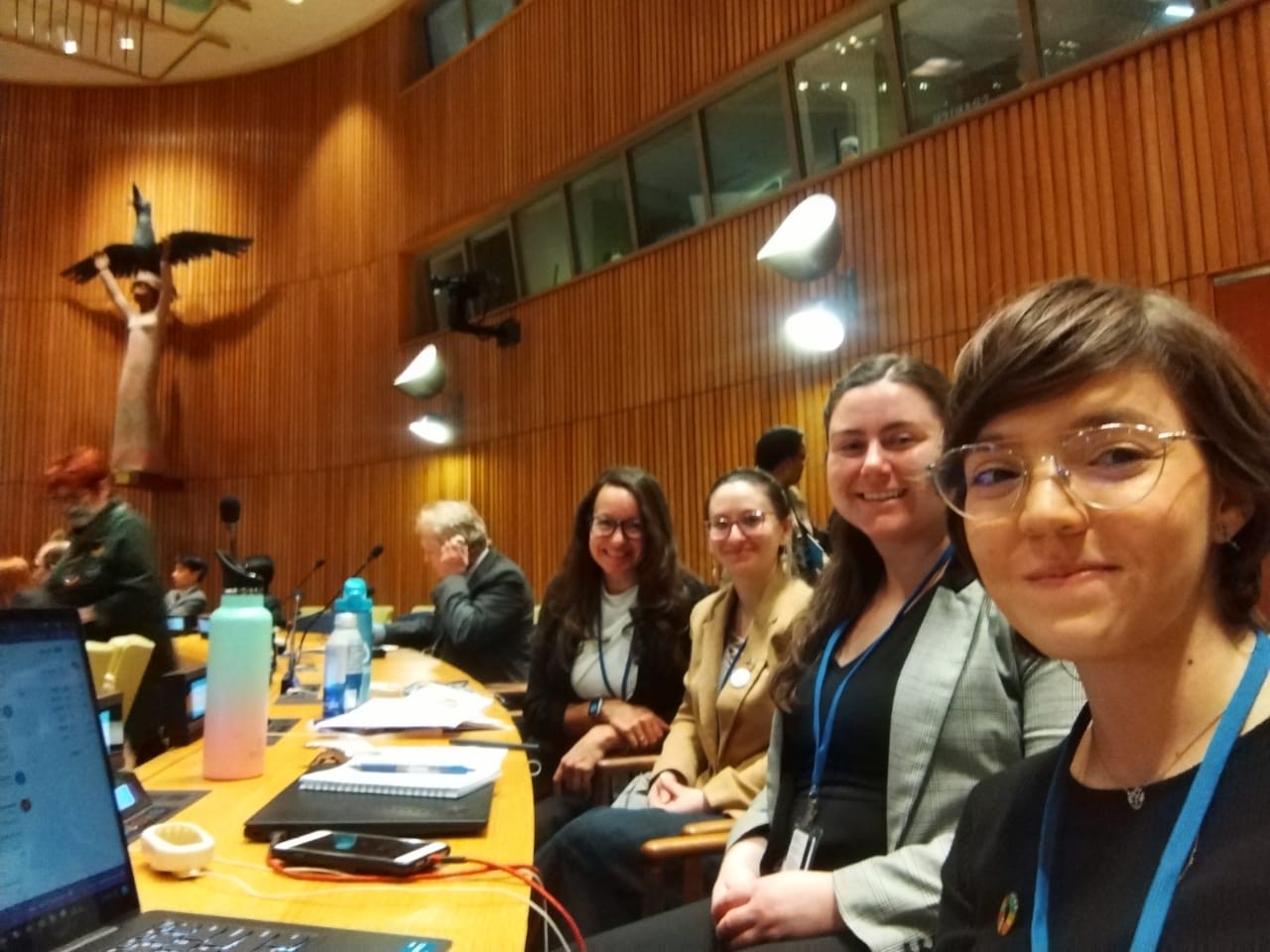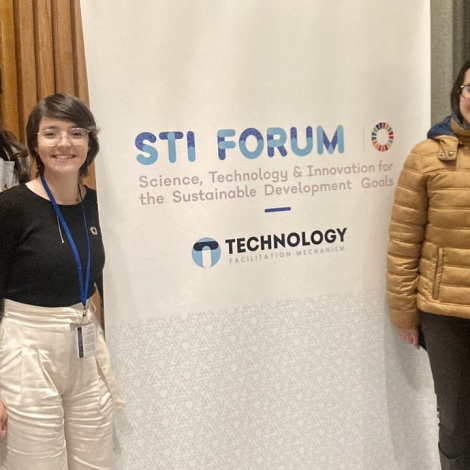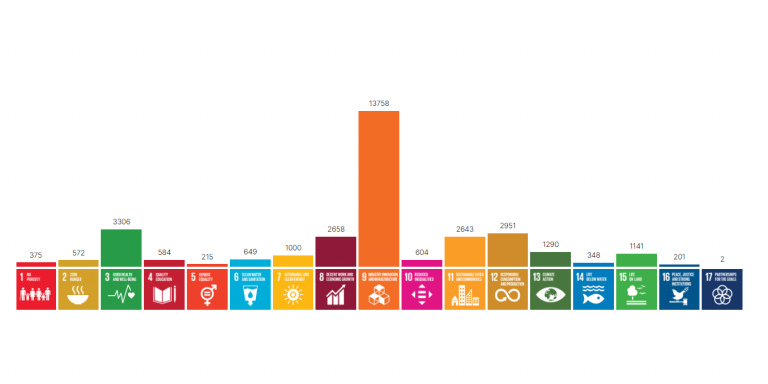Detailed ‘roadmaps’ are needed if low- and middle-income countries are to have a hope of meeting the 2030 deadline for the Sustainable Development Goals, according to presenters at the Global Solutions Summit in May. The summit was the continuation of discussions that began in 2018 and 2019 on ‘Scaling Technology Deployment for Achieving the SDGs in Emerging Markets,’ and roadmaps became a central focus of this year’s talks.
GSS 2023 convened as a side event of the 8th Multi-stakeholder Forum on Science, Technology and Innovation for the SDGs in New York City, New York, USA, and it was designed to complement earlier discussions at the Fifth African Science, Technology and Innovation Forum 2023 in Niamey, Niger, in February. A recently published synthesis of the GSS talks (pdf) includes links to presentations and a video of the entire proceedings.
Who was involved
GSS is a collaboration between the United Nations Department of Economic and Social Affairs (DESA), the World Federation of Engineering Organizations (WFEO) and its affiliate member, the American Society of Civil Engineers (ASCE), and invited presenters represent non-profits such as Heifer International, universities such as MIT and other public and private entities such as the think tank Q Element.
Engineering for Change participated, contributing notes, some of which supported the summary document of GSS. We also contributed a policy recommendation to the STI Forum:
UN STI Policy Brief: Mobilizing the Technical Workforce for the Sustainable Development Goals
Broad theme
The ‘guiding theme’ of this year’s talks was that scientific discoveries are not enough to help countries achieve the SDGs unless emerging regions can develop the means to turn lab findings into ‘tangible results on the ground.’ According to the synthesis:
The late Dr. Vanu Bose, CEO and Founder of Vanu, noted several years ago, ““It takes more creativity and innovation to market a new invention than it did to invent it in the first place.” Echoing that sentiment, African Development Bank President Akinwumi Adesina remarked, “Technologies to achieve Africa’s green revolution exist. For the most part, they are all just sitting on the shelves.”
GSS 2023 asked “why…” and how can we get them off the shelves, into the hands of people who need them?
Roadmaps
One of the prevailing responses is roadmaps. The world is seven years away from the 2030 deadline to meet the SDGs, but detailed roadmaps to achieving the goals are still lacking, experts notes at GSS. (With luck, Einstein was right about time management when he said, “If I had an hour to solve a problem I’d spend 55 minutes thinking about the problem and five minutes thinking about solutions.”)
Experts at the GSS discussions listed key elements needed in roadmaps. We’re highlighting a few of those elements that may be of interest to engineers working in sustainable development.
- Develop funding and institutional mechanisms that promote mission-oriented research.
- Mobilize engineering capacity to move technologies from laboratories to practical applications in farms, factories, and local communities. Building the capacity of engineers, especially women, and equipping them with the necessary skills is crucial for advancing sustainable development.
- Consult communities during the needs assessment, technology selection, and implementation phases. Bottom-up community input should shape the roadmaps, ensuring they address local needs.
- Engage the Diaspora in technology scouting and deployment. Members of the Diaspora, who have connections to the global economy and local communities, can introduce global technology to villages and regions, collaborating with community stakeholders for comprehensive deployment programs.
- Build institutional capacity, potentially in local university engineering faculties, to evaluate competing technologies based on criteria such as affordability, scalability, and financial and operational sustainability.
- Integrate complementary technologies, institutions, and processes. Roadmaps should identify mechanisms for scouting, evaluating, sourcing, and deploying these essential complementary technologies.
- Involve government and civil society organizations.
- Prioritize skills development and capacity building.
- Mobilize students and youth with hackathons, start-up weekends, government procurement programs, and competitions to use technology to solve problems in rural villages and urban neighborhoods.
- Explore innovative business models such as cooperatives, franchises, social enterprises, and for-profit businesses to scale the deployment of technology.
- Learn from the experiences of other communities and countries to replicate models for scaling.
Leapfrogging
Roadmaps should account for leapfrogging technologies that can skip expensive or environmentally damaging infrastructure needed to support older phases of technological development. Deploying technology is the traditional way risks meeting short-term goals at the expense of long-term gains. One example is electricity access, says Professor Deepakraj Divan, Director of the Center for Distributed Energy at the Georgia Institute of Technology and Chair of IEEE Empower a Billion Lives Competition.
More than 700 million people live with no electricity, and 3 billion live in extreme energy poverty, many of whom live on less than (USD) $2 per day while paying the most per kilowatt hour. Expanding grid access may seem like the solution to meet SDG 7 and provide affordable energy access. But expanding the grid is neither financially sustainable nor technologically necessary, Dr. Divan says. Instead, countries in emerging markets have the opportunity to leapfrog 20th century grids and deploy ‘scalable electricity ecosystems’ with ‘standardized smart interoperable devices’ and ‘plug-and-play operation’ that can ‘democratize energy access.’
“The most important technologies are following steep and sustained learning curves, with rapidly declining prices. This includes digitalization, PV solar, batteries and EVs – all pivotal in tomorrow’s energy infrastructure,” Dr. Divan says. “For instance, PV and battery prices have dropped by 90-95 percent in a short span of 20 years, are now well below parity compared with coal, gas, and diesel, and will continue to decrease over the next 20+ years. Most roadmaps do not address these fundamental issues — but need to.”
Where to start
Readers who are curious about technologies that can leapfrog and essential products with potential to scale can browse E4C’s Solutions Library. We have catalogued hundreds of products and services that meet basic needs in underserved communities. Many of the entries in our Solutions Library can supplement or even replace traditional infrastructure and more expensive technology.
Engineering for Change Solutions Library

Engineering for Change took part in the Global Solutions Summit. Right to left: Carolina Rojas, E4C Program Associate, Erin Peiffer, E4C Research Manager, Marilynn Holguin Clover, formerly with E4C, and Iana Aranda, President of E4C. Photo courtesy of Carolina Rojas

